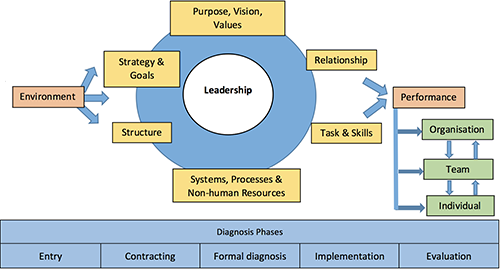Environment
External forces which affect ECU’s or the group’s objectives or performance directly or indirectly such as legislation, the economy and labour market, stakeholder relationships, employer and industry needs, emerging technologies and social change.
Purpose, Vision, Values
The purpose defines what the organisation is all about. At ECU the purpose is to transform lives and enrich society through education and research. The vision clearly and concisely communicates ECU’s long term goals. The vision is for ECU to be recognised for its world-ready graduates and world-class research. Work towards the goals needs to be undertaken in accordance with the ECU values of Respect, Integrity, Rational Inquiry and Personal Excellence. The extent to which the organisational members are clear about the organisation’s purpose, vision, and values expressed in behaviours is important to achieving ECU’s goals.
Strategy and Goals
The plan(s) devised to maintain and build sustainability, growth and competitiveness to ensure the vision is achieved.
Structure
The arrangement and resourcing of functional areas and operational units, that signify levels of responsibility, decision making authority, lines of communication, and relationships that lead to implementation of ECU’s strategy and goals.
Systems, Processes & Non-human resources
Policies, procedures and resources that are designed to help and support ECU’s employees with their jobs and role responsibilities. Includes the appropriate amount of equipment and resources needed to achieve the organisation’s goals.
Task and Skills
Understanding what a specific job position demands and the kind of knowledge, skills and abilities that an employee must have in order to fulfill the task responsibilities of their role. It’s important to see how well jobs and employees have been matched.
Relationships
Between individuals, and between schools or departments that perform different tasks and have developed their own individual cultures. This includes the level of required interdependence, quality of relationships, and how conflict is managed.
Leadership Style
This category is usually associated with the behaviour of senior executives, however at ECU this also relates to supervisors and managers. By leadership we mean, providing direction, persuasion, influence, serving followers and acting as a role model.
To what extent can ECU’s leaders set direction for the future, drive the implementation of strategy, manage uncertainty, deal with complexity, effectively manage risk and deal with complex financial, people and change management issues?
Performance - Organisation Effectiveness
The outcomes and results of all the organisation’s activities that in turn are responses to the external environment (input). It includes organisational performance, stakeholder satisfaction and productivity.
